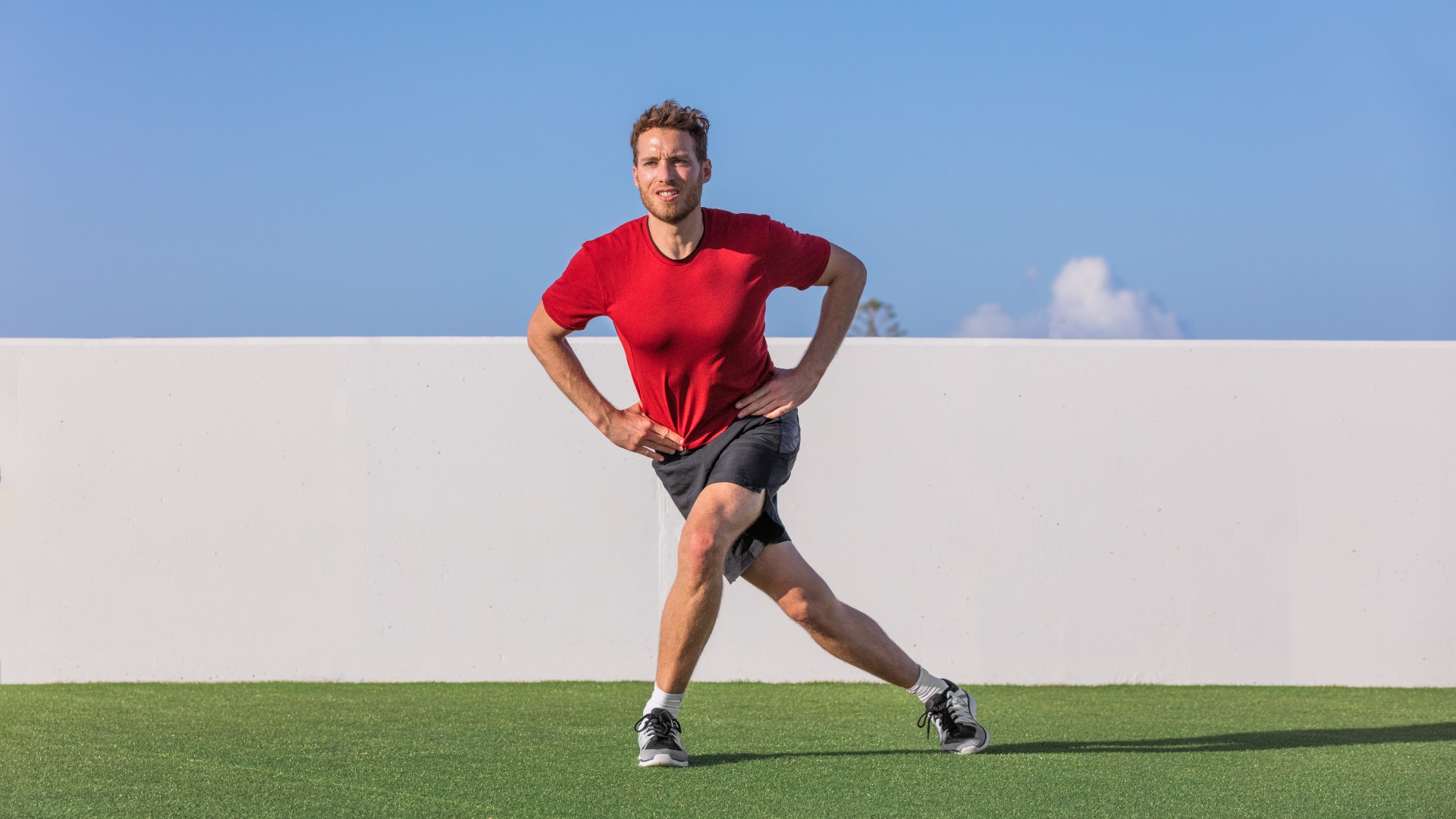
Dragon squats are the ultimate ability test — stability, flexibility and mobility. Unless you’re some sort of magician, you may not nail the lower body exercise the first, second, or tenth time, but the fun is in the learning, and I had a lot of fun.
Before I detail my experience with doing 70 dragon squats a day for a week, you might be wondering what the leg exercise is. Also known as the dragon pistol squat, the bodyweight squat variation is one of the most arduous calisthenics exercises without dumbbells or kettlebells. Simply stand on one leg, cross your other leg behind and extend it forward, then perform a one-legged squat.
I recommend having pistol squats already in your arsenal, but I get on to that below. Read on to see what happened during my latest seven-day fitness challenge and why this requires proper preparation.
How to do dragon pistol squats
We break down how to do pistol squats here, which is well worth a read if you want to swat up on the basics. Now, let’s take things up a notch.
Here’s how:
- Start standing with your arms extended out in front of you and your stomach engaged
- Shift your weight into your left leg, bend your left knee, then begin squatting
- At the same time, cross your right leg behind your left and extend the leg toward the front of the room by gently swinging it around. Try not to touch the ground
- Keep your left heel planted down, hold, then drive through your left leg, rebend the right knee and reverse back to the standing position
- Switch sides
I did 70 dragon squats every day for a week — here's what happened
Here's what happened when I attempted 70 reps a day.
My legs, glutes and hips felt tortured without weights
Dragon squats are a unilateral compound exercise, meaning you’ll focus on one side at a time. Single-sided exercises help reduce muscular imbalances, build strength and improve mobility and balance. Single-leg exercises recruit the smaller stabilizer muscles needed to perform the movement, too.
Sign up to get the BEST of Tom's Guide direct to your inbox.
Get instant access to breaking news, the hottest reviews, great deals and helpful tips.
By performing the dragon pistol squat on your right and left side separately, in theory, you should be able to develop equal ability.
The single-leg squat variation also helps develop explosive power, as you rely on one leg to execute the squat. The move targets the hip flexors, core muscles, glutes (the maximus, medius and minimus), quads, hamstrings, adductors and calves — and mine were on fire, especially the outer glutes.
I added mobility drills
Tackling any exercise without warming up is like eating your dinner without cooking it. I started with 10 reps of bodyweight squats, box step-ups and pistol squat modifications — single-leg squats, pistol squats elevated on a box and curtsy lunges — gradually building toward my starting reps.
It helped. If you plan to try this move, I strongly recommend a mobility routine of your own. We put together some simple hip mobility exercises and lower-body stretches here.
I fell over multiple times
I severely tested my balance during the dragon squat. Who invented this exercise? I’ve only just developed a level of ability with pistol squats (difficult enough, and I did pistol squats every day for a week), but this took it to a new place. I used a wall, yoga block and the floor for support — and still fell over.
I made modifications
Mobility and flexibility unlock the ability to do dragon squats, especially around your hips, knees and ankles, so I made modifications. I had to reassess my goals here. Sure, I’ll commit to 70 reps (35 per side), but I’ll build in other exercises and use my reps as a practice rather than strict reps.
I used the exercises above to help build balance and stability. The curtsy lunge and single-leg squat are great examples — you’re still balancing on and loading one leg. Curtsy lunges are probably closest to the dragon squat, as you’ll take your leg behind you, albeit resting the ball of the foot on the floor. But it’s a great jumping-off point if you’re not quite there with pistol squats and want to replicate the movement pattern.
Another bodyweight leg exercise worth trying is the shrimp squat, which follows a similar movement pattern, but you’ll tap your non-dominant knee to the floor behind you while balancing on one leg (see below). I felt far more comfortable and capable of using the variation, and it really fired up my lower legs.
I had fun
Despite not being that successful with this challenge (I still can’t consistently do the dragon squat at the time of writing), what’s life without a little challenge? The fun is in the development and learning, and I learned a lot about myself — I’m not as mobile as I tout, I’m patient (stubborn) and I don’t like being beaten.
But it’ll take more than a week for me to beat this bodyweight leg exercise, and I’ll need to continue practicing if I want to see progress. Besides, a half-decent rep of a pistol squat is a prerequisite for a dragon squat, so I’ll take a while. I’m in awe of the calisthenics masters who can perform this task as breezily as if brushing their teeth.
I nearly nailed it — once
A week’s worth of work and 490 (attempted) reps later, I semi-nailed a dragon pistol squat. And no one was there to witness it! Note to self: always film your fitness challenges.
I did 70 dragon squats every day for a week — here’s my verdict
This challenge goes into the vault of exercises I must try harder at. But if you plan to try for yourself, take care. The lower body exercise isn’t suitable for hip, knee or ankle injuries, though it is good at strengthening the joints and muscles around them if you can access them.
More from Tom's Guide

Sam Hopes is a level 3 qualified trainer, level 2 reiki practitioner and senior fitness writer at Tom's Guide. She is also currently undertaking her Yoga For Athletes training course. Sam has written for various fitness brands and websites over the years and has experience across brands at Future such as Live Science, Fit&Well, Coach, and T3.
Having worked with fitness studios like F45 and Virgin Active, Sam now primarily teaches outdoor bootcamps, bodyweight, calisthenics and kettlebells. She also coaches mobility and stretching-focused classes several times a week and believes that true strength comes from a holistic approach to training your body.
Sam has completed two mixed doubles Hyrox competitions in London and the Netherlands and finished her first doubles attempt in 1:11.
